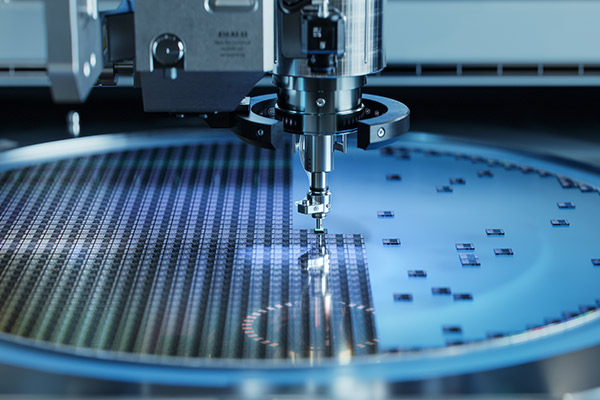Revolutionizing the future of AI and 5G technology
This post was sponsored by AT&T Business, but the opinions are my own and don’t necessarily represent positions or strategies of AT&T Business.
A powerful convergence of intelligence and communication capabilities. That’s what we’re seeing with the fusion of 5G and artificial intelligence (AI), two ground-breaking technologies that are combining to create disruptive solutions set to change the world.
5G, despite its complexity, is doing exactly what it’s supposed to do: working its magic in use cases that consumers never think about while also steadily delighting consumers as the rollout continues.
But there’s even more potential in 5G as AI makes use of 5G capabilities to give devices superpowers, and to roll out novel use cases for distributed connected devices operating at the edge. The 'Age of Convergence' aptly describes the landscape where two powerful forces merge and, together, AI and 5G are set to redefine the boundaries of what's possible.
The Age of Convergence: How 5G and AI are working together to revolutionize the future
The Age of Convergence—the merging of technology, data, and communications—is continuing to evolve, enabling users do more on one device. Connectivity, which includes speed and support for the data generated and received by these devices, is more essential than ever. 5G, or fifth-generation technology, is the latest standard for cellular networks, offering faster data speeds than 4G, better response times, and improved connectivity for mobile devices. 5G also employs a more intelligent architecture that reduces constraints around base station proximity or complex infrastructure.
It means that 5G now enables enterprise use cases—not just through higher performance and resilience, but also through unique technologies such as user plane function (UPF) that make it easier to exchange data between 5G networks and enterprise networks or the cloud.
And indeed 5G is steadily marching on. McKinsey quotes a Global System for Mobile Communications Association (GSMA) figure of $600bn spent on 5G by 20251—and the GSMA states that operators will spend 92% of their CAPEX on 5G network deployment between 2023 and 2030.
The numbers for AI are just as staggering. In 2023, we’ve seen how large language models (LLMs) have rapidly risen to the public consciousness. Goldman Sachs suggests that investment in AI may amount to US$200bn globally by 2025.2
When so much is spent on two overlapping technologies we’re sure to see an explosion of innovation. Of course, some 5G investments have very little to do with AI and, in some cases, an AI implementation never touches the radio waves.
But the two technologies nonetheless converge naturally. 5G offers impressive bandwidth and ultra-low latency—especially when mmWave technology is used—alongside the ability to handle a vast number of devices simultaneously.
This provides the perfect infrastructure for AI algorithms to operate in real-time. Whether it's autonomous vehicles that require split-second decision-making or healthcare applications that rely on real-time data analysis, the combination of 5G and AI is pivotal.
How can we leverage AI for 5G wireless technology?
AI often needs high-performance computing to execute intelligent tasks and it’s often achieved through on-device or nearby on-site servers, like those in stadiums or stores. However, on-device AI can deplete batteries and may lack power for complex tasks.
Besides, devices might not have the storage for diverse data sets, or the necessary computing power—and on-site servers face security, space, power, and maintenance challenges.
With 5G, AI processing can be hosted where it is convenient. This could mean moving processing from devices and on-site locations to central sites—whether a small data center or at a major cloud provider. It enables a whole range of use where AI capabilities are aligned with 5G connectivity:
Machine learning: 5G networks facilitate rapid data transfer which means devices can use AI systems to process large datasets in real time for faster decision-making. 5G's high-speed and low-latency capabilities also support the deployment of complex neural networks and deep learning models to edge devices, such as smartphones or IoT sensors.
Computer vision: powerful computer vision applications can use the high-bandwidth connectivity of 5G to process large amounts of image and video data, resulting in faster object recognition and analysis.
Pattern recognition: with 5G, connectivity devices can report information to data centers in almost real time. This means AI systems can swiftly identify patterns and detect anomalies in data, which is useful for tasks such as fraud detection, quality control and predictive maintenance.
Indeed, thanks to 5G, distributed AI becomes a reality as different aspects of the AI workflow are performed in different locations—with the location depending on requirements around performance, privacy, and costs.
How AI is revolutionizing 5G across industries
So what does this mean in practice? In manufacturing, we’ll see smart factories equipped with AI-driven robots and Internet of Things (IoT) devices that communicate seamlessly over 5G networks, ensuring real-time production monitoring and the ability to proactively prevent breakdowns and stoppages.
In healthcare we’ll see how remote surgery, patient monitoring, and personalized treatments are becoming a reality with 5G and AI. That means innovations like ward-round robots, which can conduct real-time remote check-ups, alleviating the workload on nurses. 5G and AI systems also support round-the-clock multi-party consultations, connecting with other hospitals and specialists, and using AI advice to improve diagnostic precision.
Transportation also benefits from 5G. Autonomous vehicles rely heavily on real-time data processing and by combining 5G's speed and AI's decision-making capabilities, these vehicles can now make split-second decisions, ensuring safety and efficiency on the roads.
Low-latency 5G technologies enable vehicles to communicate with each other and with traffic management systems almost instantaneously, reducing congestion and improving safety. AI algorithms can analyze the data generated by these systems to predict traffic patterns and optimize routes for individual vehicles.
Other 5G and AI use cases to look out for
From the serious to the not-so-serious, 5G and AI combine to drive novel use cases of all kinds. Consumers are also seeing a broad variety of gains when 5G and AI come together:
Metaverse and social: A virtual shared space, created by converging virtually enhanced physical reality and interactive virtual spaces, relies on real-time data processing. 5G and AI together can make the metaverse experience seamless and immersive. Real-time content translation, AR-driven filters, and personalized content feeds will become the norm, thanks to the combined powers of 5G and AI.
Entertainment: Online gaming is set to undergo a transformation with virtual reality (VR) and augmented reality (AR) becoming mainstream. The combination of 5G's speed and AI's graphics rendering capabilities will provide gamers with lifelike experiences. 5G and AI benefits streaming too: AI can curate content based on user preferences, while 5G ensures that high-definition content is streamed without buffering.
Real-time language translation tools: Traveling to a foreign country without knowing the language won't be a problem. Real-time translation tools, powered by AI and supported by 5G, are set to break down language barriers.
Clearly, the integration of 5G and AI technologies has the potential to revolutionize consumer experiences. As the adoption of 5G and AI continues to expand, we can expect to see a transformation in the way consumers interact with technology and the world around them.

Using AI to drive business success
Using AI can be a game changer for scaling your business. Andy Markus, CDO from AT&T Business, discusses using AI for smarter business decisions.
Challenges and limitations integrating 5G and AI
Integrating 5G and AI can present challenges, however. Costs are one concern; integrating AI into 5G networks requires significant infrastructure investment alongside specialized hardware and software, which can be costly.
Complexity is another concern. Both 5G and AI are complex technologies. Combining the two and finding the synergies is not a simple task. AI algorithms require specialized technical expertise to design, implement, manage, and maintain, which can be an issue for businesses that lack sufficient internal resources. Although finding experts in AI can be challenging, you can begin by working with skilled experts who can help you lay the foundation with 5G and your network.
Integration with legacy systems can hold back progress in fully leveraging the benefits of 5G and AI. Legacy systems often cannot support the speed, bandwidth, and latency AI demands. As the 5G ecosystem becomes more standardized than it is today, it will become easier to orchestrate services and integrate AI systems.
The rise of 5G- and AI-enabled devices increases cyber risk as it expands the attack surface for cybercriminals. Each connected device, regardless of its seeming harmlessness, can serve as a potential entry point for hackers, or can be turned into a botnet member.
In addition, 5G networks themselves are complex, multilayered structures. Quick and savvy cybercriminals can exploit new frequency bands, network slicing, and other changes. A multi-layered cybersecurity strategy, built on a reliable, secure network is imperative to mitigate these risks.
Addressing these challenges will be crucial for companies to successfully harness the potential of 5G and AI technologies and transform various industries.
Can AI improve 5G capabilities?
By now, the synergetic relationship between 5G and AI should be clear, but let’s also look at it from a different angle: what does AI have to offer for 5G performance, operations and security?
It turns out that AI's potential in enhancing 5G is vast. Machine learning algorithms can predict network congestion, optimize traffic flow, and enhance user experience by dynamically allocating resources.
Or, take small cell deployments. AI can identify instances of high latency, low bandwidth, and black spots to then suggest optimal locations for small cells. By analyzing patterns, AI can foresee potential network disruptions and take preemptive measures, ensuring seamless connectivity.
Moreover, AI-driven automation can manage and maintain 5G infrastructure, reducing operational costs and human errors. AI algorithms can optimize the transmission power and energy consumption of base stations depending on the proximity of devices that use them.
AI also helps mitigate security risks by monitoring network traffic and detecting underlying anomalies, such as malware or cyberattacks. AI can learn from each attack and prevent similar future attacks—and respond in real time, far faster than human cybersecurity experts.
Is your 5G network ready for AI adoption?
This symbiotic relationship between 5G and AI means that as 5G networks expand, AI's role in managing and optimizing these networks will become increasingly significant. Service providers need to start integrating AI capabilities into their 5G networks now to take advantage of lower total cost of ownership (TCO) and an improved customer experience.
This will help network operators to ensure that their 5G networks support the demands of AI workloads—the ability to minimize latency, deliver high bandwidth, and manage huge volumes of devices.
After all, as businesses consider integrating AI into their operations, the underlying network's readiness becomes crucial.
In conclusion, the fusion of 5G and AI is more than just a technological advancement; it's a paradigm shift as two incredible technological advances overlap in a powerful way. Network operators must be ready to serve the high demands of AI use cases because leading enterprises will soon require nothing less.
Why AT&T Business?
See how ultra-fast, reliable fiber and 5G connectivity protected by built-in security give you a new level of confidence in the possibilities of your network. Let our experts work with you to solve your challenges and accelerate outcomes. Your business deserves the AT&T Business difference—a new standard for networking.
Learn more about AT&T 5G solutions for business. To connect with an expert who knows business, contact your AT&T Business Representative.
1Shamik Bandyopadhyay, Pallav Jain, Jeremy Leing, and Stefan Prisacaru, “Navigating the Three Horizons of 5G Business Building,” McKinsey & Company, February 22, 2023, https://www.mckinsey.com/industries/technology-media-and-telecommunications/our-insights/navigating-the-three-horizons-of-5g-business-building.
2“AI Investment Forecast to Approach $200 Billion Globally by 2025,” Goldman Sachs, August 1, 2023. https://www.goldmansachs.com/intelligence/pages/ai-investment-forecast-to-approach-200-billion-globally-by-2025.html.



